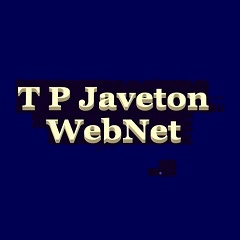The basics of resume headings
The first and most prominent item on your resume is your name and contact information. Your name is typically in the largest font, standing apart from all other text on your resume. A common mistake made by many professionals is trying to emphasize their name in a special font type. As it is difficult to anticipate which software and version your potential employer is using, you run a risk of not knowing exactly how your name will appear on their screen.
In view of the above it is advisable to stick with basic font types like, Arial and Times New Roman which are two of the most commonly used, and are least risky when it comes to formatting your resume, and you should also be mindful not to go overboard on the font size. For example, your name should be in point size 14 or 16 and all other headings should be in 12 or 14 point font, while the remaining text of your resume should be in the range of 10 and 12 point font.
Along with your name, the very top of your resume should contain your mailing address, your email address, and at least one phone number where you can be reached. It is best to include a physical mailing address instead of a P.O. Box, whenever possible; and you should never include an email address at your current place of employment (yes, it happens). A helpful hint about listing your email address is to make sure that it contains your name, as this helps you appear more professional.
Resume inclusions reflect professional image
You can create a free email account with one of the leading providers of such service, e.g. Gmail, MSN, Yahoo, etc. and it might be helpful to have one email address as a point of contact for your job search. At least one phone number should be listed; but make sure to indicate if you are listing a home or a mobile number. If you have a professional website, the site address can also be included along with your contact information.
Please note that you should only provide a website address if the website does not contain anything that is personal, or any personal identifiable information (PII) because the only reason a potential employer may want to look at a website is if your professional portfolio or a copy of your resume can be found there.
Whether you decide to create a chronological resume or a functional resume, you will need to separate the information by with the use of headings; and the best advice you’ll get anywhere is to keep the section headings professional and stick to the basics. Don’t try to come up with creative titles for your professional summary, or for your qualifications. If you use a chronological resume the following sections/titles should be featured:
Contrast in resume heading styles
- career objective
- professional summary (optional)
- professional experience/work experience/experience
- education
- publications/special achievements (if applicable)
- qualifications/skills
- references/references and portfolio
A functional resume is slightly different, and the headings you choose will really depend on the skills you’re trying to highlight. Features should include:
- career objective
- education
- professional skills/professional qualifications (this section will include sub-headings as they relate to specific qualifications you want to promote, such as communications, customer relations, management positions, etc.)
- work experience/work history (if applicable; should only include dates, titles, companies and locations without listing responsibilities)
- volunteer work/activities (if applicable)
- references
To conclude with…
The above mentioned features are typically those that are found in chronological and functional resumes; but you might want to do a little research on resume styles to find sample resumes of professionals in your industry; and if the need arise, simply adjust these headings based on your field, but be mindful of keeping the content consistent across industries.
Stick to the basics, and don’t try to be creative in order to stand out, because a professional and polished resume will get you noticed. So do your best to create a resume that is error free, and which best supports your career objective.


